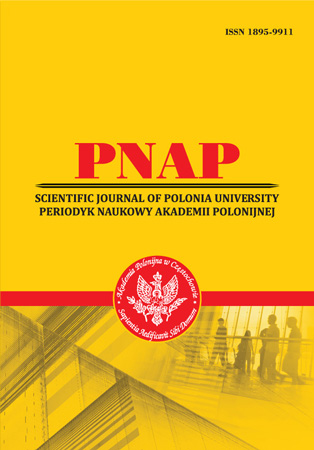THE ROLE OF PEPSINOGENS IN THE FORMATION OF GERD IN PATIENTS WITH COPD
Abstract
The article presents data on the role of pepsinogen-1 and -2 and bilirubin in the formation of gastroesophageal reflux disease (GERD) in patients with chronic obstructive pulmonary disease (COPD). Clinical, biochemical, immunological research methods were used in the work. The activity of pepsinogens 1 and 2 and bilirubin in saliva was determined in all patients with combined pathology. It has been established that the presence of concomitant GERD in patients is an independent aggravating factor for the function of external respiration. In patients with concomitant GERD, a significant increase in acute phase parameters in the serum, indicating active systemic inflammation. Increased activity of the cytokine IL-6 and IFNγ indicates the activation of the cellular immune system, with an unregulated immune response that supports chronic inflammation in the bronchi even in remission. Increased levels of IL-4 are compensatory in nature, as IL-4 inhibits the production of macrophages of proinflammatory cytokines, including IL-6. Detection of correlations between the concentration of total bilirubin in saliva with a decrease in external respiration, namely FVC, FEV-1, as well as the presence of shortness of breath allows us to consider bilirubin as a possible marker of reflux and respiratory inflammation in the bronchi, until obstruction. The positive correlation of pepsinogen-1 in saliva with an allergic history, and pepsinogen-2 in saliva with cough, shortness of breath and smoking, and a negative correlation of pepsinogen-1 with the value of FEV1 / FVC, allows to consider pepsinogen-1 and pepsinogen-2 as markers of non-acid reflux and respiratory inflammation with bronchoobstruction
References
2. Chorna, V. V., Khlyestova, S. S., Gumenyuk, N. I., Makhnyuk, V. M., & Sydorchuk, T. M. (2020). Pokaznyky zakhvoryuvanosti i poshyrenosti ta suchasni poglyady na profilaktyku khvorob.[ Morbidity indicators and dissemination and modern attitudes on disease prevention]. Visnyk Vinnytskogo natsionalnogo medychnogo universytetu, 24( 1), 158-164 [in Ukrainian]
3. Francis DO.(2016) Chronic cough and gastroesophageal reflux disease. Gastroenterol Hepatol (N Y),12(1):64.
4. Golpe, R., Martín-Robles, I., Sanjuán-López, P., Cano-Jiménez, E., Castro-Añon, O., Mengual-Macenlle, N., & Pérez-de-Llano, L. (2017). Prevalence of major comorbidities in chronic obstructive pulmonary disease caused by biomass smoke or tobacco. Respiration, 94(1), 38-44.
5. Katzka, D. A., Enders, F., Romero, Y., Alexander, J. A., Achem, S. R., Francis, D. L., ... & Arora, A. S. (2011). Which chronic upper airway symptoms may be due to acid reflux?. Gastroenterology, 5(140):254.
6. Kusano, M., Kuribayashi, S., Kawamura, O., Shimoyama, Y., Hosaka, H., Nagoshi, A., ... & Mori, M. (2011). A Review of the management of gastric acid-related diseases: focus on rabeprazole. Clinical Medicine. Gastroenterology, 4, CGast-S5133.
7. Kravchenko, T. Yu., Losyeva, K. O., Lotysh, N. G., Loseva, E. A., & Lotysh, N. G. (2011). Gastroezofagealna reflyuksna khvoroba u ditey: etiopatogenez, klinika, diagnostyka ta likuvannya [Gastroesophageal reflux disease in children: etiopathogenesis, clinic,diagnosis and treatment] https://journal.odmu.edu.ua/xmlui/bitstream/handle/123456789/1929/KravchenkoArt.pdf?sequence=1&isAllowed=y [in Ukrainian]
8. Lin YH, Tsai CL, Tsao LI, Jeng C.(2019) Acute exacerbations of chronic obstructive pulmonary disease (COPD) experiences among COPD patients with comorbid gastrooesophageal reflux disease. Journal of clinical nursing, 28(9-10), 1925-1935.
9. Makarova GV, Rekalova OM.(2019) Osoblyvosti perebigu khronichnogo bronkhitu u khvorykh z suputnoyu gastroezofagalnoyu reflyuksnoyu khvoroboyu [Features of the course of chronic bronchitis in patients with related gastroesophageal reflux disease]. Astma y allergyya, (4):37–42[in Ukrainian]
10. Pearson, J. P., Parikh, S., Orlando, R. C., Johnston, N., Allen, J., Tinling, S. P., ... & Belafsky, P. C. (2011). Reflux and its consequences--the laryngeal, pulmonary and oesophageal manifestations. Conference held in conjunction with the 9th International Symposium on Human Pepsin (ISHP) Kingston-upon-Hull, UK, 21-23 April 2010. Alimentary Pharmacology and Therapeutics, 33, 1-71.
11. Shevchuk-Budz, U. I. (2018). The study of clinical and pathogenetic characteristics of the chronic bronchitis course on the background of the aggravating concomitant gastroesophageal reflux.
12. Tolokh, O. S. (2017). Xronichne obstruktyvne zakhvoryuvannya legen: novi rishennya starykh problem. Ukrayinskyy pulmonologichnyy zhurnal [Chrjnic obstructive pulmonary disease^new solution of old problem]. (3), 51-56. [in Ukrainian]
13. Wang, Y. J., Lang, X. Q., Wu, D., He, Y. Q., & Lan, C. H. (2020). Salivary pepsin as an intrinsic marker for diagnosis of sub-types of gastroesophageal reflux disease and gastroesophageal reflux disease-related disorders. Journal of neurogastroenterology and motility, 26(1), 74.
14. Ye, B. X., Jiang, L. Q., Lin, L., Wang, Y., & Wang, M. (2017). Reflux episodes and esophageal impedance levels in patients with typical and atypical symptoms of gastroesophageal reflux disease. Medicine, 96(37).
Abstract views: 233 PDF Downloads: 177







